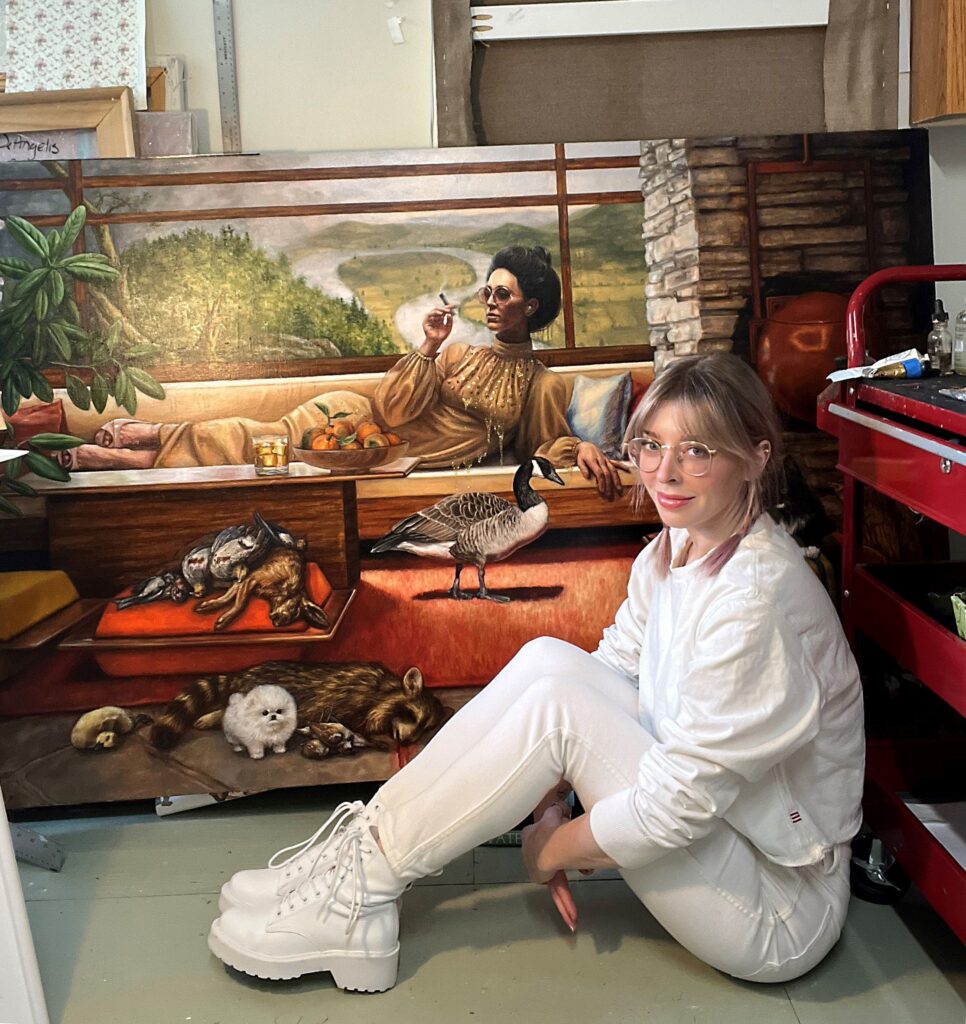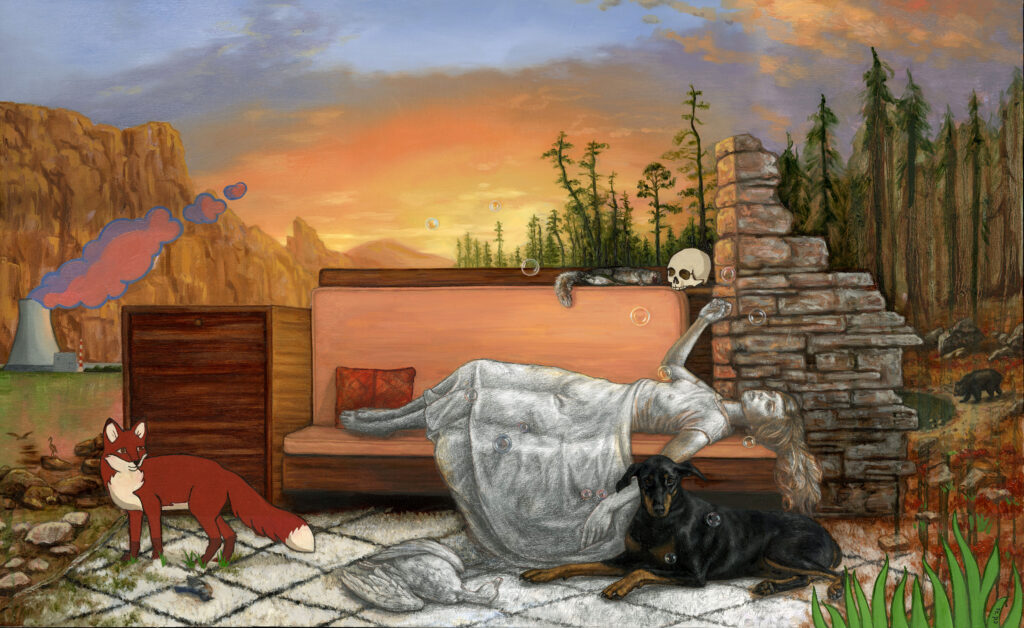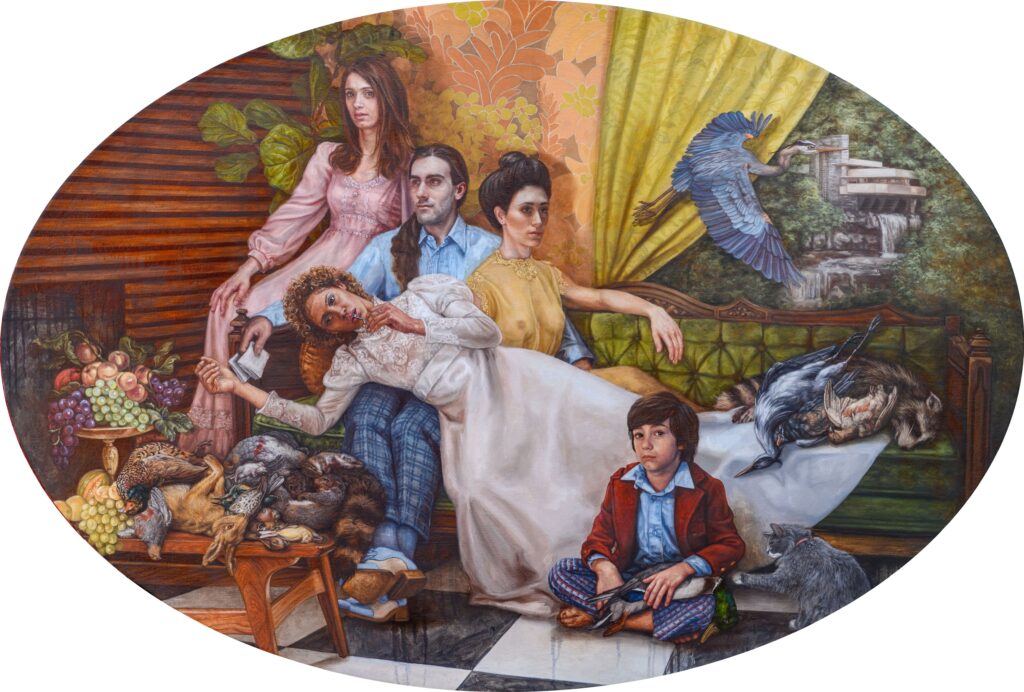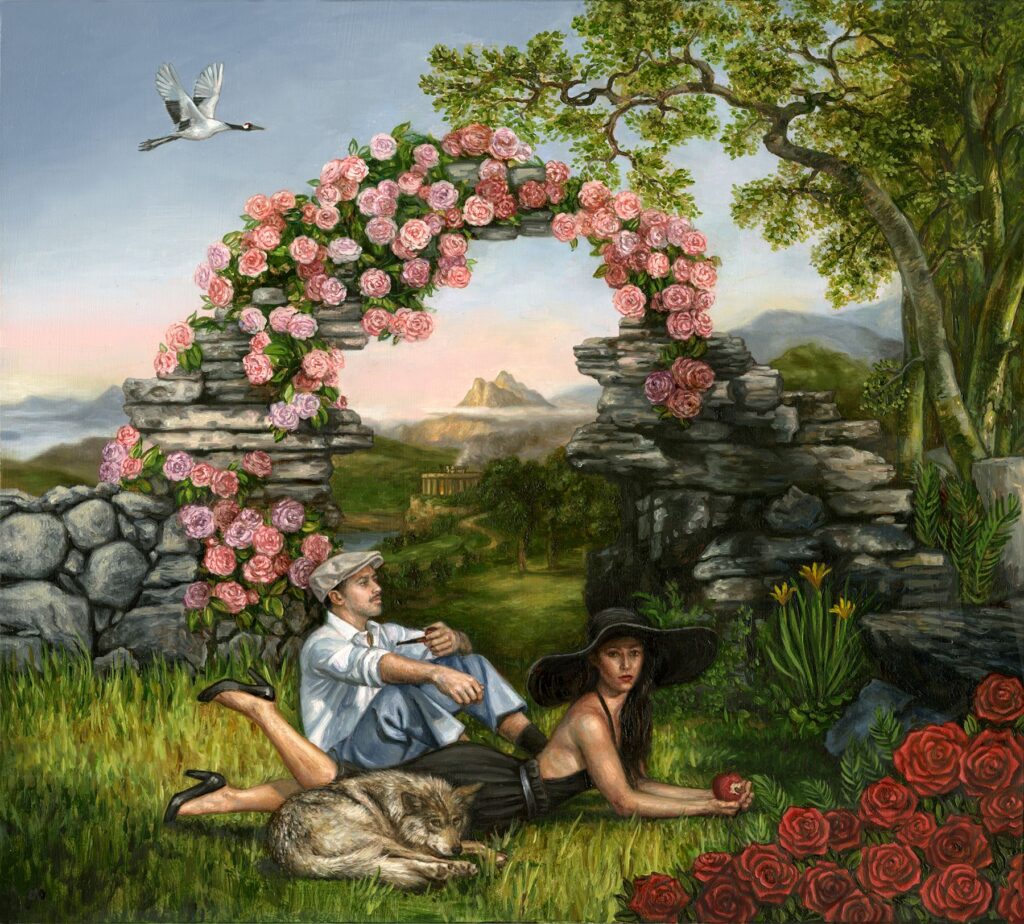Cara De Angelis was born and raised in the wilds of Northeastern America. She has been a recipient of the CT Office of the Arts Fellowship Grant, as well as the Barbara Deming/Money for Women Grant. She has had fellowships at the Vermont Studio Center, the Prairie Center of the Arts in Illinois, and the Contemporary Arts Center in Troy, New York. In 2010 she was awarded full residency at the Terra Foundation in Giverny, France, along with a Guggenheim travel grant. She is also a beneficiary of the Rudolph Zallinger Painting Award.
In 2011, Cara graduated with her Master’s degree from the New York Academy of Art where she participated in Master Classes with Jenny Saville and Vincent Desiderio. In January 2017 her work “Donald Trump with a Crown of Roadkill” garnered national attention and was seen in Newsweek, NYLON, W Magazine, and was even spoofed by Jon Stewart on the Late Show.
Her work has been exhibited throughout the country, and recently sold at Sotheby’s NYC. She currently lives and works in the Northeast as artist and domesticated creature. Her work is represented by Gary Marotta Fine Art in Provincetown, MA and MM.

FWM: Does life imitate art?
I think it does. But art also imitates life. It’s a closed-looped circuit, and neither can really exist without the other. Or so it seems, since humans have had the need to create since our earliest predecessors inhabited caves and wandered the earth in groups. It’s like, does existence stem from order or chaos? Well, the answer is always both.
FWM: How have you evolved as a Painter?
If I could describe this tangibly, it would probably be so dry and technical your eyes would glaze over. I hope I’ve evolved enough to justify my continued output and this innate need and desire to slowly pour out what’s in me. And I’m grateful for anyone else that finds value and beauty in the images.
“Art is a ripening, an evolution, an uplifting which enables us to emerge from darkness.” – Jerzy Grotowski
FWM: Tell us about “Was This Paradise.” Where did you draw your inspiration from?
The piece originally started out with a completely different backdrop. It was an interior scene, but I wanted the walls to come down and have her somewhere between a dream and the end of the world. The inspiration comes from nature, first and foremost. The rest all kind of trickles down from subconscious and obsession.

Was this Paradise
Artists Statement
This body of work is about our conflicting desires as humans to both conquer Nature, and to live within it. Is the need to conform the natural world to our modern human society an act of love, or an act of fear? What does this dissonance say about our fear of being out of control, or back in the wild? The works in “Was This Paradise” are neither Utopian nor Dystopian, but hints at both as humanity has come to a symbolic fork in the road. Which path will we take? What happens if we don’t decide either way?
The models and references I draw from represent a mix of living and dead, of past and present. Some of the animals depicted in these works are local roadkill that I collect and paint in my studio, while others are lifted directly from 17th century hunting still lives. By pairing living animals and humans with the deceased, I aim to recreate the uneasiness and frisson that epitomizes our relationship with Nature.
“Her paintings do more than intellectualize a concern for wildlife…they also seem to hold an uncompromising mirror up to human actions.” -Symbol & Aesthetics Do you agree?
That excerpt was part of a review I received shortly after grad school. I do agree artists have historically been notorious for being the mirrors of the time they live in, and whether people look or not is up to them. I never want to force anyone to think about something they’re not open to, but I do create work that speaks about what I want to say out loud but don’t really know how.

FWM: Several of your pieces in this series are directly inspired by the work of architect Frank Lloyd Wright whose designs upheld the concept of “living with nature”; not conquering it. Explain.
Frank Lloyd Wright was miles ahead of his time and that’s one reason his work still speaks such a modern language we can instantly connect with. Meanwhile much of it is about 100 years old, or more. Early to mid-century America was solidly Capitalistic with the cloying Manifest Destiny ethos to build, flatten and conquer everything in reach.

Then along comes FLW and he thinks the landscape should dictate the shape of the dwelling! He leaves trees intact and builds houses around their bodies. He builds directly into the rocks and leaves boulders in the living room as a focal point. Very few in the Western World cared like that and made such bold commentary with their art and livelihood. Those trees he built around — many of them are now dead and gone, like we all are eventually, but their silhouettes remain in the structures he built. Still making his bold and loving statement about our relationship to what grows and lives around us.
FWM: Where can we find your work?
Select pieces are on view year-round at Gary Marotta Fine Art in Provincetown, MA. And I’ll be having a show opening there on June 18th of new work.
I’ll also be showing at the Southampton Art Fair in MM Fine Art’s booth this August in NY.
FWM: What can we expect to see over the next 6 months?
I’m working in a relatively new medium, and combining it with paint, you can follow my studio exploration (and struggle) on my Instagram @cara_deangelis. This new work will be on view in P-Town in June till end of July. In November I’ll be artist-in-residence at Casa Na Ilha, on a little island off the coast of Brazil.


